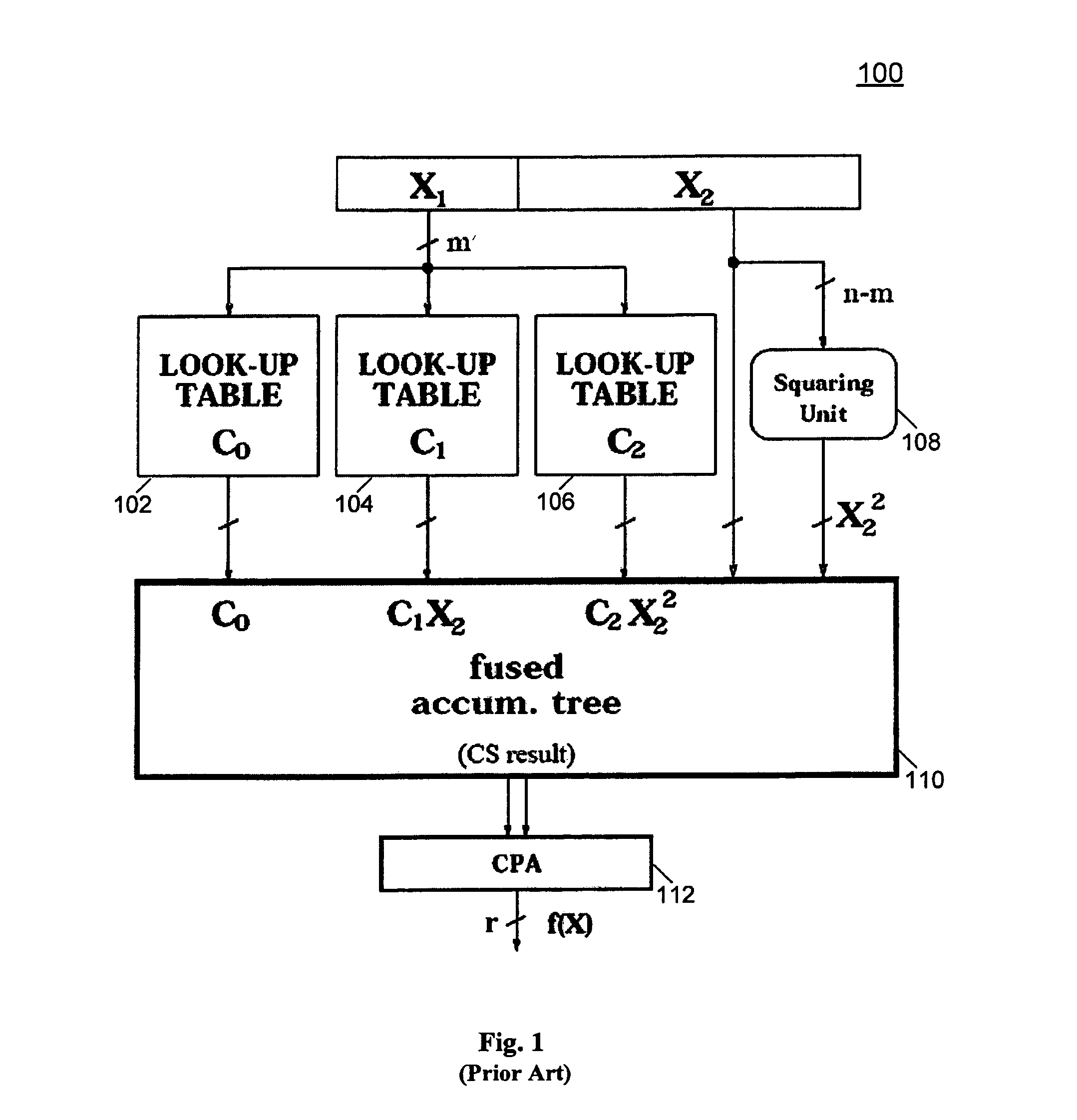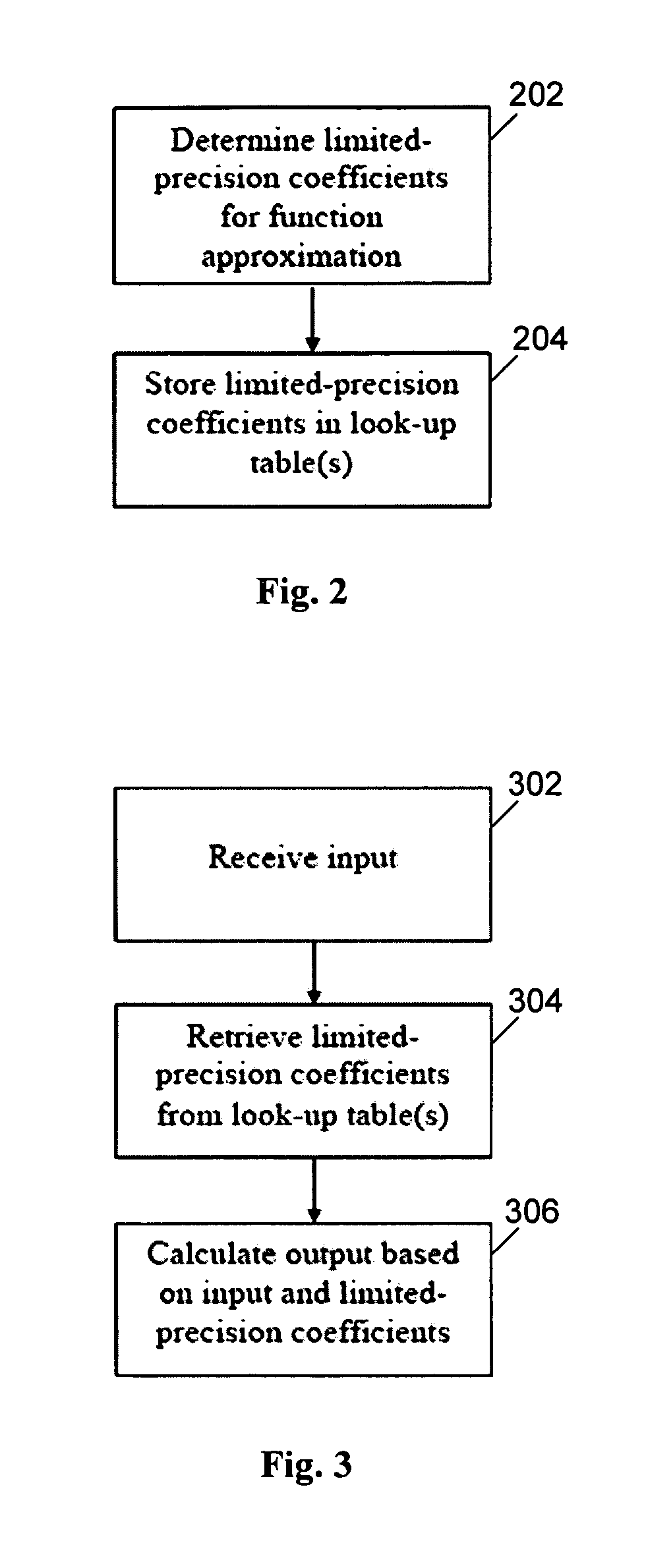High-speed function approximation
a function and high-speed technology, applied in the field of high-speed function approximation, can solve the problems of reducing execution speed, increasing the size of look-up tables, and adding to the complexity of calculations based on coefficients
- Summary
- Abstract
- Description
- Claims
- Application Information
AI Technical Summary
Benefits of technology
Problems solved by technology
Method used
Image
Examples
Embodiment Construction
[0017]FIG. 1 is a block diagram of a function approximation unit 100 based on table look-up of polynomial coefficients in accordance with one embodiment of the present invention. The function approximation unit 100 comprises look-up tables 102, 104, and 106, a squaring unit 108, an accumulation tree 110, and a carry-propagate adder (CPA) 112. The function approximation unit 100 receives in input X and approximates a function f(X) based on a polynomial approximation using the input X and limited-precision coefficients retrieved from look-up tables 102, 104, and 106. As shown in FIG. 1, X is an n-bit binary input that may represent a fixed-point or floating number, or a portion of such a number. In the present embodiment, X represents the significand of a floating point number comprising a significand and an exponent. For example, this floating point number may be represented using an IEEE single-precision floating point number format. According to the present embodiment of the invent...
PUM
 Login to View More
Login to View More Abstract
Description
Claims
Application Information
 Login to View More
Login to View More - R&D
- Intellectual Property
- Life Sciences
- Materials
- Tech Scout
- Unparalleled Data Quality
- Higher Quality Content
- 60% Fewer Hallucinations
Browse by: Latest US Patents, China's latest patents, Technical Efficacy Thesaurus, Application Domain, Technology Topic, Popular Technical Reports.
© 2025 PatSnap. All rights reserved.Legal|Privacy policy|Modern Slavery Act Transparency Statement|Sitemap|About US| Contact US: help@patsnap.com



